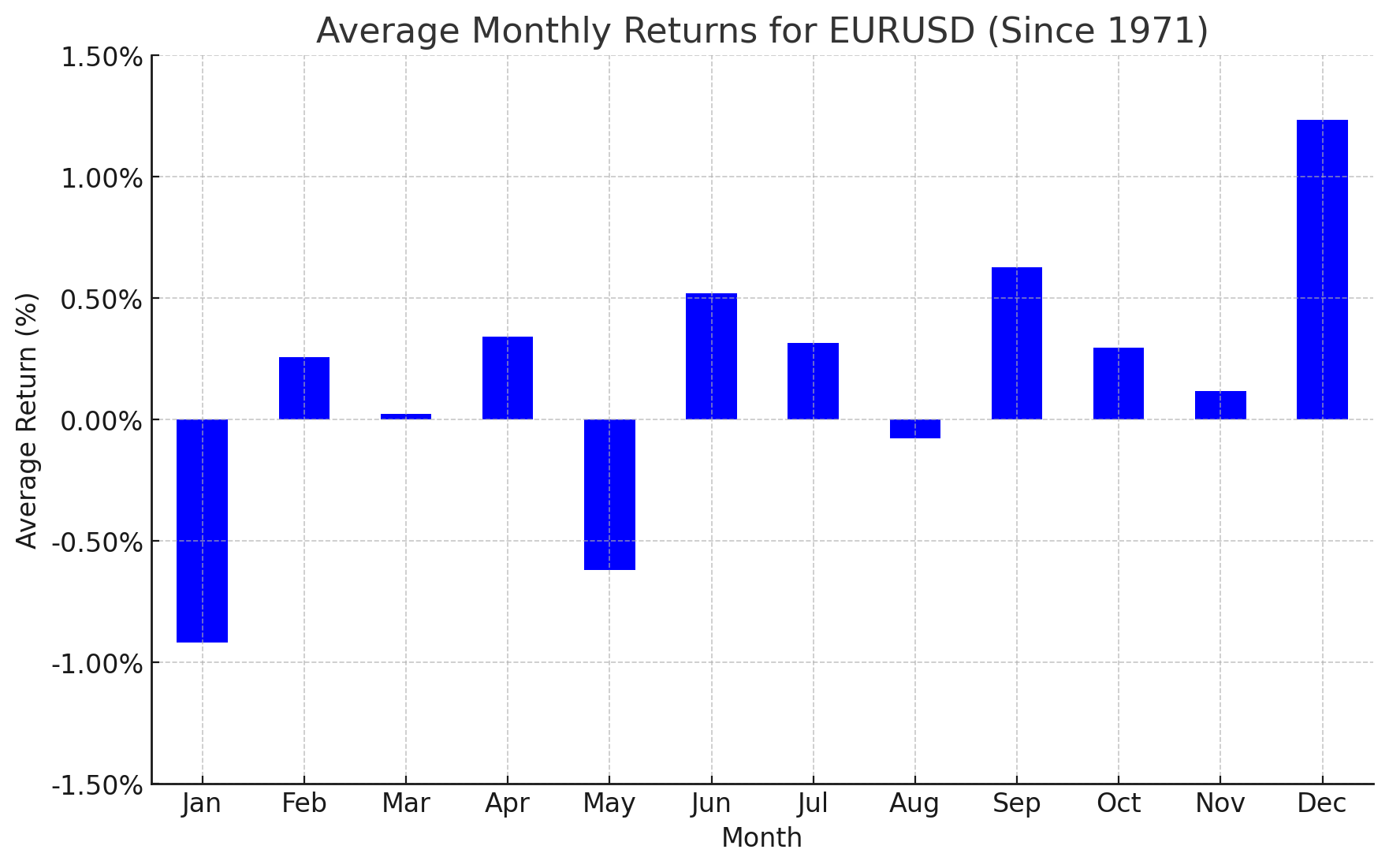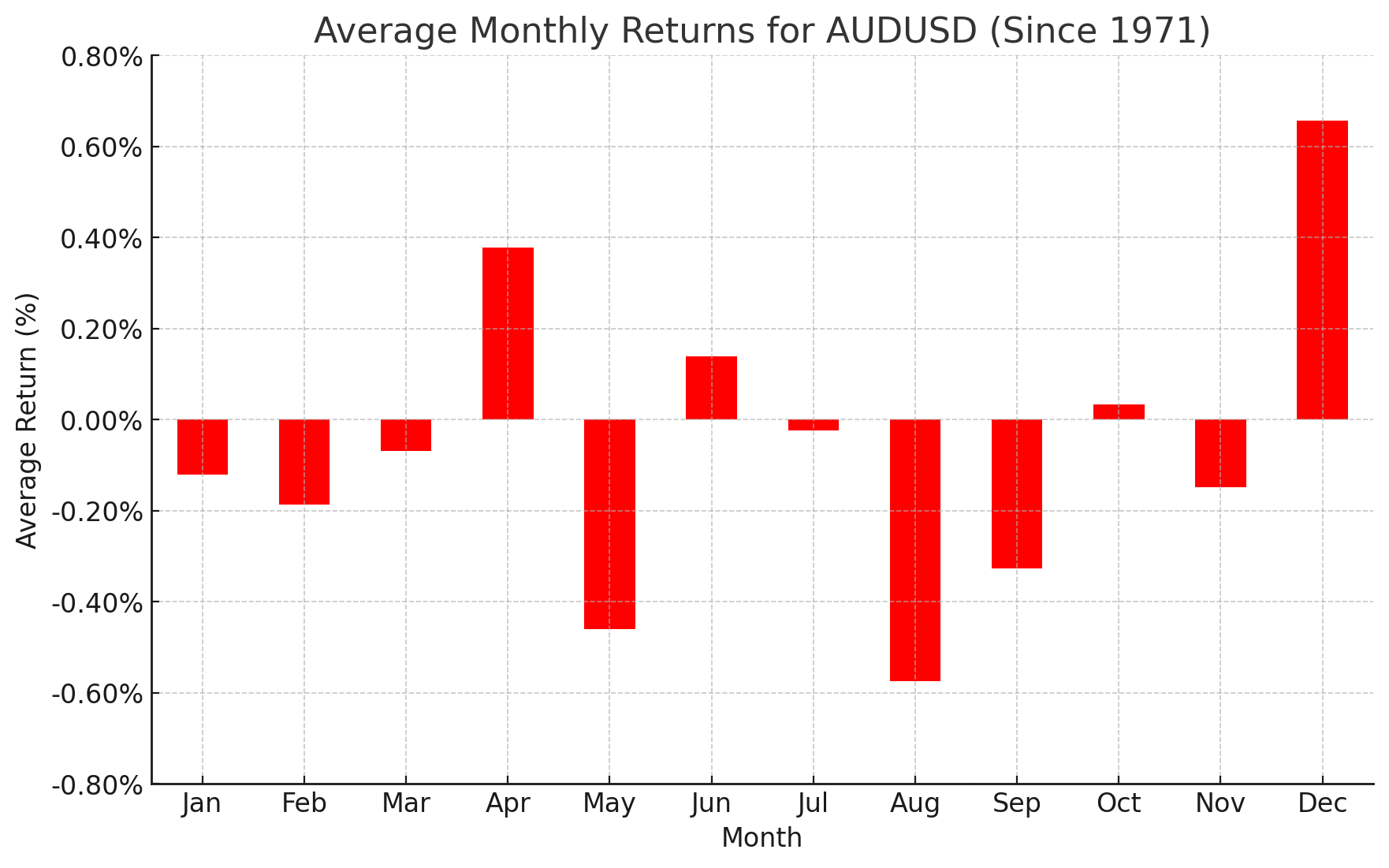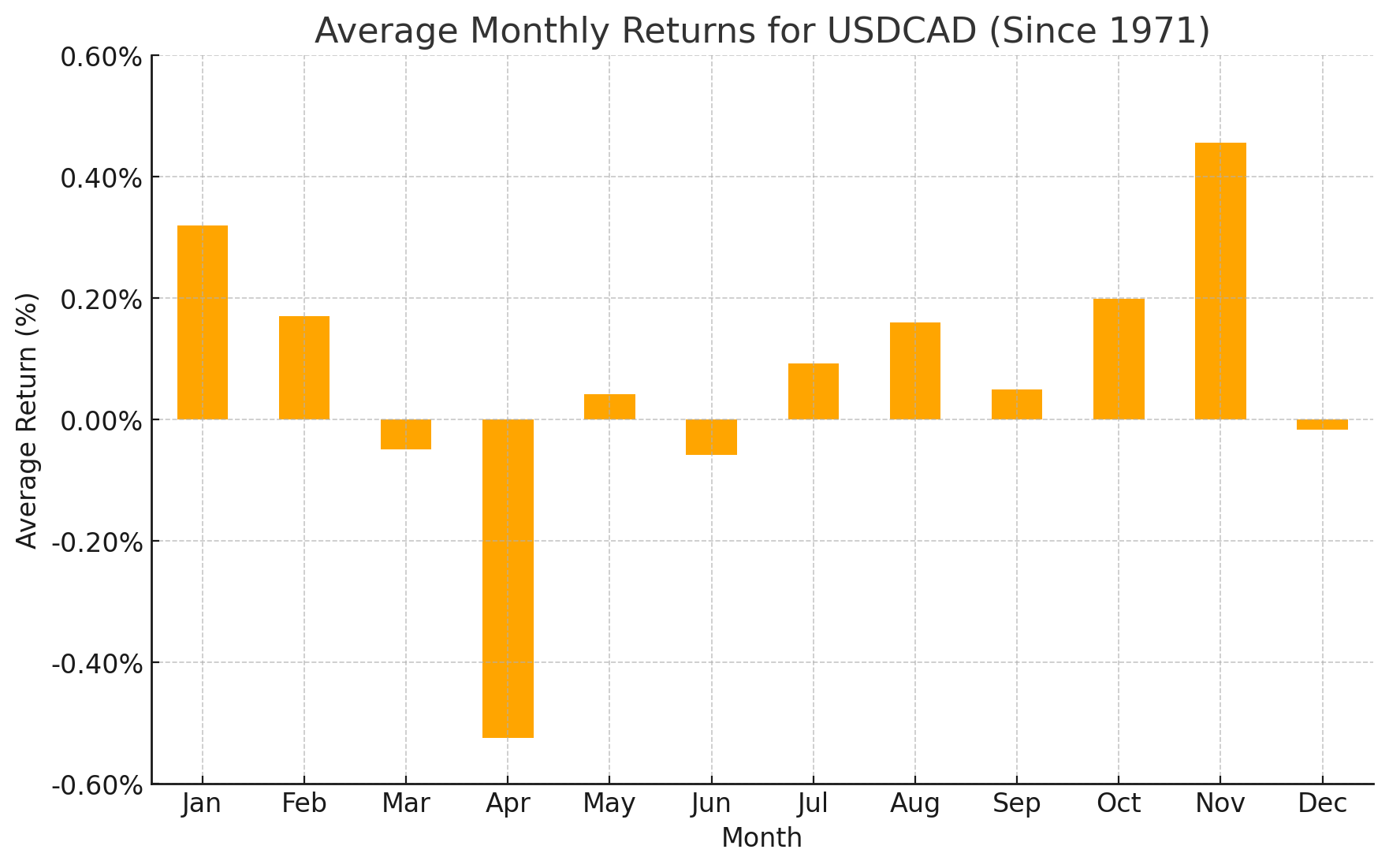Bill Gross warns on gold momentum as regional bank stocks tumble
- May has historically seen weakness in EUR/USD, GBP/USD, and AUD/USD going back to the Bretton Woods Agreement in 1971.
- In contrast, USD/JPY and USD/CAD have seen more mixed performance in May.
- Developments on the trade and tariff front, especially signs of progress toward trade agreements between the US and key trading partners may trump (no pun intended) long-term seasonal trends.
The beginning of a new month marks a good opportunity to review the seasonal patterns that have influenced the forex market over the 50+ years since the Bretton Woods system was dismantled in 1971, ushering in the modern foreign exchange market.
As always, these seasonal tendencies are just historical averages, and any individual month or year may vary from the historic average, so it’s important to complement these seasonal leans with alternative forms of analysis to create a long-term successful trading strategy. In other words, past performance is not necessarily indicative of future results.
Euro Forex Seasonality – EUR/USD Chart
Source: TradingView, StoneX. Please note that past performance is not necessarily indicative of future results.
Historically, May has been the second-weakest month for EUR/USD, with the world’s most widely-traded currency pair sporting an average return of -0.62% over the last 50+ years. In April, EUR/USD saw its biggest rally since November 2022(!), gaining nearly 5% amidst fiscal stimulus in Europe and concern about a trade-driven slowdown in the world’s largest economy.
Bulls will be watching for a confirmed break above resistance at last month’s high in the mid-1.15s to open the door for an extended rally in the coming month.
British Pound Forex Seasonality – GBP/USD Chart
Source: TradingView, StoneX. Please note that past performance is not necessarily indicative of future results.
Looking at the above chart, GBP/USD has historically seen relative weakness in May, with average returns of around -0.37% since 1971. Like the euro, the British pound also gained significant ground against the greenback in April, briefly peeking out to a 3+ year high above 1.3450. As long as cable holds above the 200-day MA (currently around 1.2840), the path of least resistance should remain to the topside as we head through May.
Japanese Yen Forex Seasonality – USD/JPY Chart
Source: TradingView, StoneX. Please note that past performance is not necessarily indicative of future results.
May has historically been a quiet month for USD/JPY, with the pair rising by an average of +0.01% since the Bretton Woods agreement. In line with its long-term seasonal trend, USD/JPY fell sharply in April, helped along by general selling in the greenback and expectations of a narrowing interest rate gap between the Bank of Japan and Federal Reserve.
Traders will be watching the 2-year lows at 1.3950 for a potential breakdown if the seasonal trend asserts itself again this month.
Australian Dollar Forex Seasonality – AUD/USD Chart
Source: TradingView, StoneX. Please note that past performance is not necessarily indicative of future results.
Turning our attention Down Under, AUD/USD has its second-weakest performance in May, with an average loss of -0.45% going back to 1971. Last month, AUD/USD reversed off its post-COVID lows to close solidly higher amidst the broad-based weakness in the US dollar. For May, readers should watch the 50% Fibonacci retracement of the September 2024 to April 2025 drop at 0.6430 as a key resistance level that may cap rates if the seasonal trend reasserts itself.
Canadian Dollar Forex Seasonality – USD/CAD Chart
Source: TradingView, StoneX. Please note that past performance is not necessarily indicative of future results.
Last but not least, May has been a mixed month for USD/CAD, with an average historical return of +0.04%. While it can be useful to understand the historical seasonal tendencies in certain environments, the North American pair faces much more significant pressure from the health of its trading relationship with the US and the new minority government under Prime Minister Mark Carney, and those headlines may once again be a bigger driver for USD/CAD this month than the bearish seasonal trend.
As always, we want to close this article by reminding readers that seasonal tendencies are not gospel – even if they’ve tracked relatively closely so far this year–so it’s important to complement this analysis with an examination of the current fundamental and technical backdrops for the major currency pairs.
